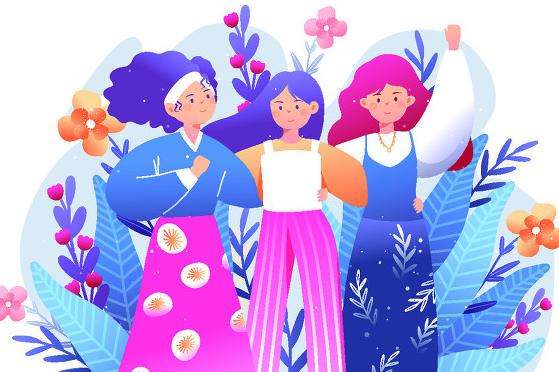Tailoring an icon

The cheongsam has traveled, from ethnic Manchu origins to a blending of Chinese and Western sewing skills, Yao Lan and Hong Xuehua report in Hong Kong.
Specks of dust float in the air and fabric clippings are scattered at a tailor's shop as a smiling elderly man, with a tape measure around his neck, opens an old-Shanghai picture album featuring then-fashionable women in qipao, or cheongsam.
Leung Long-kong, 89, is not well-known in the mainland, but people around the world have marveled at his work, thanks to director Wong Kar-wai's award-winning film In the Mood for Love. The film featured 23 colorful qipao made by Leung when the traditional dress was still popular in the streets of Hong Kong.
The Chinese fashion icon, qipao, was born a century ago in Shanghai. However, the dress made its way through history from the hands of old craftsmen and is deep-rooted in Chinese culture.
Qipao, featuring a high collar and delicate cloth buttons on the front, originated during the Qing Dynasty (1644-1911). In Hong Kong, it is known as cheongsam, meaning "long gown" in Cantonese.
"Cheongsam used to be so popular, as people did not have many options to buy Western-style clothes," Leung says, adding that the dress was an everyday outfit among Hong Kong women, from the less well-off to women at the highest levels of society.
"Now, nobody is wearing them except on grand and happy occasions."
Leung came to Hong Kong from neighboring Guangdong province at the age of 13 before he started his apprenticeship, which seemed to be the only way to earn his daily bread back then.
"I was too little to know what to do, and it was so hard to make a living at that time," he says.
Finishing a three-year apprenticeship making qipao and suits, Leung witnessed the gradual shift of qipao from a dress of ethnic Manchu origins to its blending of Chinese and Western sewing skills in Hong Kong.
The unique dress, which used to have a high neck and straight skirt covering a woman's body, except for her head, hands and feet, in the 1950s became more form-fitting, with a more revealing cut, shorter sleeves, and a high slit up the leg, after the traditional garment was brought to Hong Kong by a group of Shanghai tailors. The glory days of qipao in the 1950s and '60s Hong Kong waned in a time of fast fashion and mass production of ready-to-wear clothing.
"The old tailors have died one by one. As one of the youngest, I'm one of the few who are left," says 74-year-old Chun Ceung-lam, another Hong Kong tailor.
In the 1980s, he ran more than five shops in Hong Kong selling silk and handmade qipao, but now only one remains in operation.
But cheongsam is still a preserved tradition visible at formal occasions, such as wedding ceremonies, movie premieres and the Miss Hong Kong pageant. It still serves as the school uniform in more than 10 middle schools in Hong Kong.
"For decades, it was largely unique to Hong Kong, which kept the tradition alive," says Liu Tik-sang, a professor at the Hong Kong University of Science and Technology's Division of Humanities, adding that the culture preserved in Hong Kong went back to the mainland with a modern twist after the reform and opening-up in the late 1970s.
The Hong Kong cheongsam-making technique has been inscribed on the fifth national list of intangible cultural heritage, announced in June by the government, because of its "outstanding historical and cultural value", according to the Hong Kong Special Administrative Region government.
With many of the cheongsam craftspeople now in their twilight years, with less than 10 senior tailors left in Hong Kong, veterans and young designers are trying to figure out a way to pass on the legacy.
While Chun is still teaching cheongsam-making classes in schools, Leung, whose apprentices have either retired or left, can hardly resume the time-consuming task due to his age and health condition.
"The kids and grandchildren all want to learn while having little time and patience. A lot of people knocked on the door and said they are eager to learn, but were all declined," says Leung's daughter, Emba Leung.
To carry on the tradition, fashion designer Mary Yu, 41, who has been attending classes teaching knot button-making techniques, is trying to renew the design of cheongsam by taking cues from Chinese history and literature.
"I feel I should tap into Chinese culture and learn more about the past. People should have an in-depth understanding of their culture in order to move on," Yu says. "Fashion design requires a profound knowledge of one's culture before visualizing it.
"After a period of wearing Chanel all the time, there will be a day when one looks back to traditional Chinese culture, whose subtlety, luxury and elegance have been inherited for thousands of years.
"It is about finding the stuff that exists in your genes and suits you best."
Yu set up her own qipao brand in 2016 at Yue Hwa Chinese Products Emporium in Hong Kong's Kowloon district. Most of the clothes were made by tailors based in Shenzhen, Guangdong province, or Hangzhou, Zhejiang province, for their lower cost and more traditional work.
In the constantly evolving fashion industry, qipao is catching up with the times. Zippers, digital print patterns and new materials such as lace and denim have been introduced to a new generation. More daring ideas like 3D printed qipao have also become a reality.
"Culture should evolve to reflect our time, while holding on to some of the most basic elements, such as knot buttons, the mandarin collar and side slits," says Crystal Hu, president of the Royal Cheongsam Association in Hong Kong and a qipao enthusiast who owns over 200 such dresses in a variety of styles.




